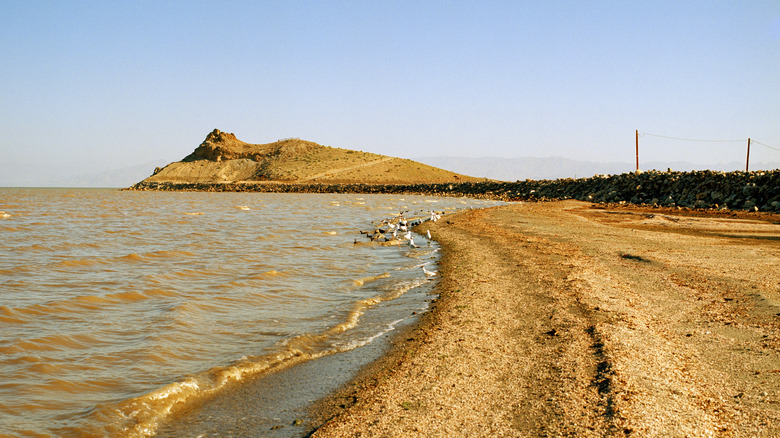An Under-The-Radar Wildlife Refuge In California Is The Perfect Place For Hiking And Bird Watching
California is a state ripe with secret mountain towns offering endless outdoor adventure, and there's an under-the-radar wildlife refuge in southern California that has become the perfect place for hiking and bird-watching. It's found on the Salton Sea, near Borrego Springs with California's largest state park, known for stargazing, and 90 miles from breathtaking Palm Springs and its 16 best things to do on vacation. The Sonny Bono Salton Sea National Wildlife Refuge Complex was created in 1930 and re-named after former Congressman Sonny Bono, who championed conservation efforts in the Salton Sea during his tenure. It consists of 37,900 acres along the Salton Sea, which is California's largest lake.
The unique combination of habitats — croplands, desert, and wetlands — allow for a variety of wildlife, trees, and plants to thrive. There are 869 acres of croplands, which produce alfalfa, wheat, and millet. The native desert upland habitat hosts many plant and animal species found in the Sonoran Desert. And the 826 acres of wetland are the most common places for migrating bird species, providing water and food sources for ducks and other birds. The Visitor Center is a great place to start your visit to the Refuge, with knowledgeable staff and a host of written information packets, such as the U.S. Fish and Wildlife Service's map and brochure. It's open Monday through Friday year-round and expands to the weekends from October to February.
Explore the outdoor recreation of the breathtaking California refuge
The Sonny Bono Salton Sea National Wildlife Refuge's location, situated in the heart of California's desert, provides a perfect paradise for bird-watching and hiking, and is an ideal place for wildlife photography. Over 400 species of birds passing through make bird-watching a major visit highlight. As the seasons change and migration patterns evolve, so do the bird species calling the refuge home. In spring, you might be able to spot beautiful verdins and Bullock's orioles, while summer is the nesting season for quail, black skimmers, and western gull-billed terns. Fall is known for migrating birds like northern shovelers and ruddy ducks, while winter hosts as many as 200 species due to mild temperatures, including sandhill cranes and snow geese.
Wildlife spotting might also include cottontail rabbits, muskrats, gophers, bobcats, and coyotes. Nocturnal species such as skunks and raccoons may remain elusive except after dark, but keep an eye out for the variety of snakes and lizards. There are two main hiking trails within the Refuge. The longest hiking trail is the Salton Sea-Rock Hill Trail, which is two miles long, considered easy for all levels of hikers, and leashed-dog-friendly. It starts at the Visitor Center. Another is the around one-mile loop Hardenberger Trail, departing from a wildlife observation deck and passing through the Riedmann Duck Pond. It includes a photo blind — a hidden spot for shooting wildlife so as not to spook them.
Follow these tips for visiting and adhere to some regulations
The Sonny Bono Salton Sea National Wildlife Refuge is a breathtaking site in the California desert, and it's important to keep that landscape and climate in mind when planning a visit, along with ensuring that habitat and wildlife protection take precedence. Visiting in any season is possible, but with summer temperatures reaching 100 degrees Fahrenheit or more, you'll want an alternative if beating the heat is important. Winters, on the other hand, are mild, causing the Salton Sea to rise to its highest levels and providing ideal visiting conditions. The U.S. Fish and Wildlife Service serves as the park's management and maintains that protecting the wildlife and landscape takes priority no matter the season.
At times, that means they close off certain areas to the public, and ask visitors to respect any signs and fencing for these efforts. There's also no camping on the Refuge, and dogs are welcome but must be leashed at all times. From October through February, certain sites within the Refuge allow legal waterfowl hunting, following California state regulations. Permits for this hunting can be obtained through the California Department of Fish and Wildlife. The area's sister wildlife refuge, the Coachella Valley National Wildlife Refuge, is not open to the public due to its fragility. If you're looking for a taste of wildlife mixed with stellar California desert vibes, then consider a stop through the Salton Sea region and explore the wildlife refuge.


